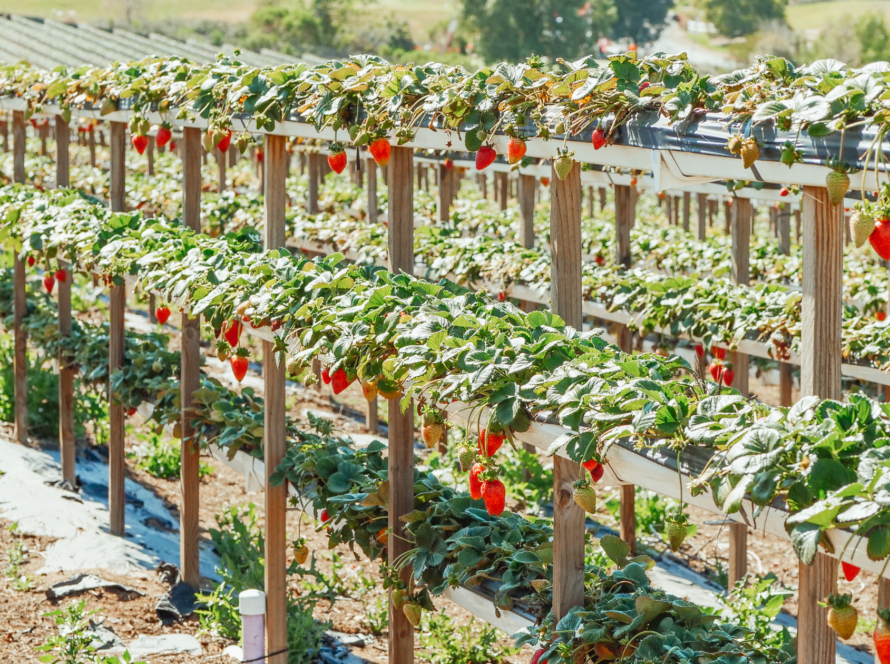Small-scale farming can be a rewarding and profitable venture when choosing the right crops. With increasing demand for organic, locally grown, and specialty produce, small farmers have opportunities to maximize earnings while maintaining sustainable agricultural practices. In this article, we explore some of the most profitable crops for small-scale farming and tips for optimizing their growth and sales.
- Microgreens
Microgreens are young vegetable greens that are highly nutritious and flavorful. They grow quickly, often ready for harvest within 7–21 days, making them a great option for continuous revenue.
- Why They’re Profitable:High demand in restaurants, health-conscious consumers, and gourmet markets.
- Growing Requirements:Minimal space, indoor or outdoor growing options, and controlled climate conditions.
- Herbs
Herbs like basil, mint, cilantro, and rosemary are always in demand, making them an excellent choice for small-scale farms.
- Why They’re Profitable:Require little space, can be grown year-round, and fetch premium prices in fresh and dried forms.
- Growing Requirements:Well-drained soil, adequate sunlight, and regular harvesting to encourage regrowth.
- Mushrooms
Gourmet mushrooms such as oyster, shiitake, and lion’s mane are becoming increasingly popular among health-conscious consumers and chefs.
- Why They’re Profitable:Can be grown indoors in controlled environments with minimal land use.
- Growing Requirements:Dark, humid conditions with organic substrates like sawdust or straw.
- Garlic
Garlic is a staple in kitchens worldwide and has a long shelf life, making it a great crop for profitable farming.
- Why They’re Profitable:High market demand, ability to store for months, and value-added potential (e.g., garlic powder, pickled garlic).
- Growing Requirements:Well-drained soil, proper spacing, and a long growing season (approximately 8–9 months).
- Lavender
Lavender is a versatile crop with multiple revenue streams, including essential oils, dried bouquets, and culinary uses.
- Why They’re Profitable:High demand in aromatherapy, cosmetics, and herbal tea markets.
- Growing Requirements:Well-drained, sandy soil with full sun exposure.
- Gourmet Tomatoes
Heirloom and cherry tomatoes are particularly profitable due to their rich flavor and organic appeal.
- Why They’re Profitable:Popular in farmers’ markets, restaurants, and CSA (community-supported agriculture) programs.
- Growing Requirements:Support structures, proper fertilization, and pest management.
- Berries (Strawberries, Blueberries, Raspberries)
Berries are high-value crops that attract health-conscious consumers and can be sold fresh, frozen, or processed into jams and syrups.
- Why They’re Profitable:Strong market demand, multiple sales avenues, and the ability to add value.
- Growing Requirements:Acidic soil, proper pruning, and pest control management.
- Specialty Lettuce and Salad Greens
Leafy greens like arugula, spinach, and romaine are quick-growing and in high demand year-round.
- Why They’re Profitable:Short growth cycle, repeat harvests, and high consumer demand for fresh, organic greens.
- Growing Requirements:Regular watering, shade during extreme heat, and protection from pests.
Tips for Maximizing Profitability
- Diversify Crops:Growing a mix of high-demand crops reduces risk and attracts a wider customer base.
- Value-Added Products:Consider selling dried herbs, infused oils, or jams to increase profit margins.
- Market Strategically:Focus on direct-to-consumer sales through farmers’ markets, CSAs, and local restaurants.
- Utilize Vertical Farming:Maximize space efficiency with stacked growing systems for crops like microgreens and lettuce.
- Invest in Sustainable Practices:Organic and eco-friendly growing methods can command premium prices and build customer loyalty.
Conclusion
Choosing the right crops is essential for a profitable small-scale farming operation. By focusing on high-value, in-demand crops like microgreens, herbs, mushrooms, and berries, small farmers can create sustainable and lucrative businesses. With the right strategies and marketing approach, small-scale farming can be both financially rewarding and environmentally responsible.



